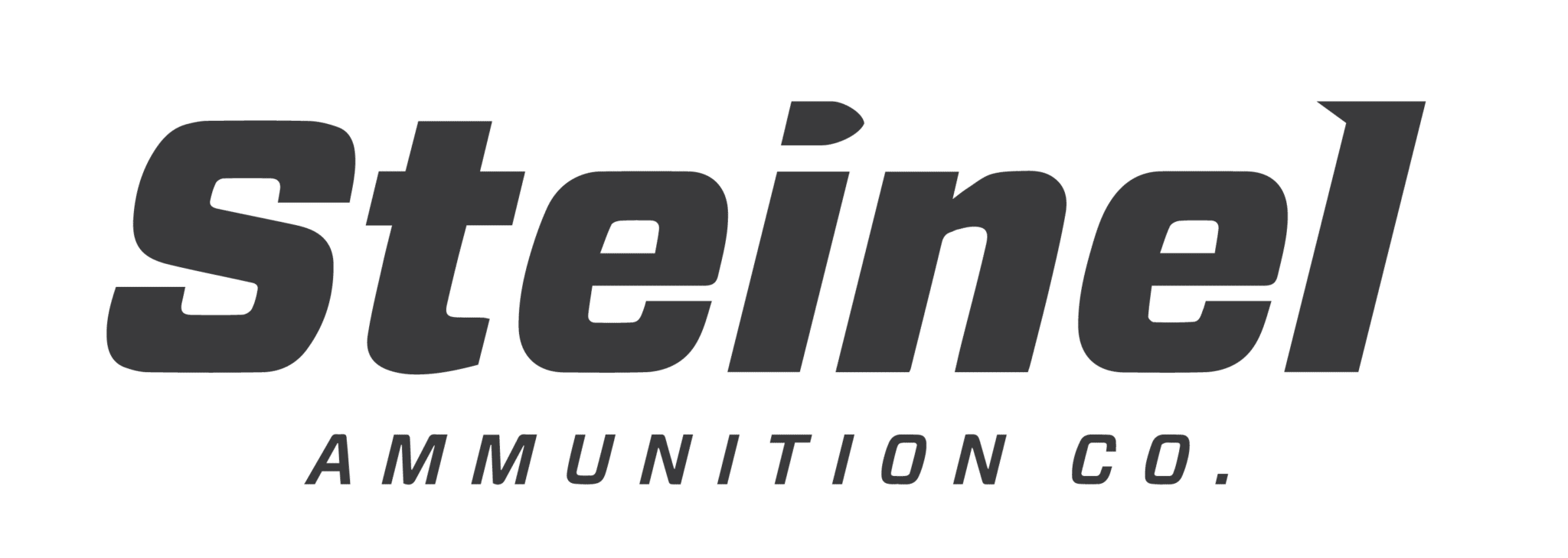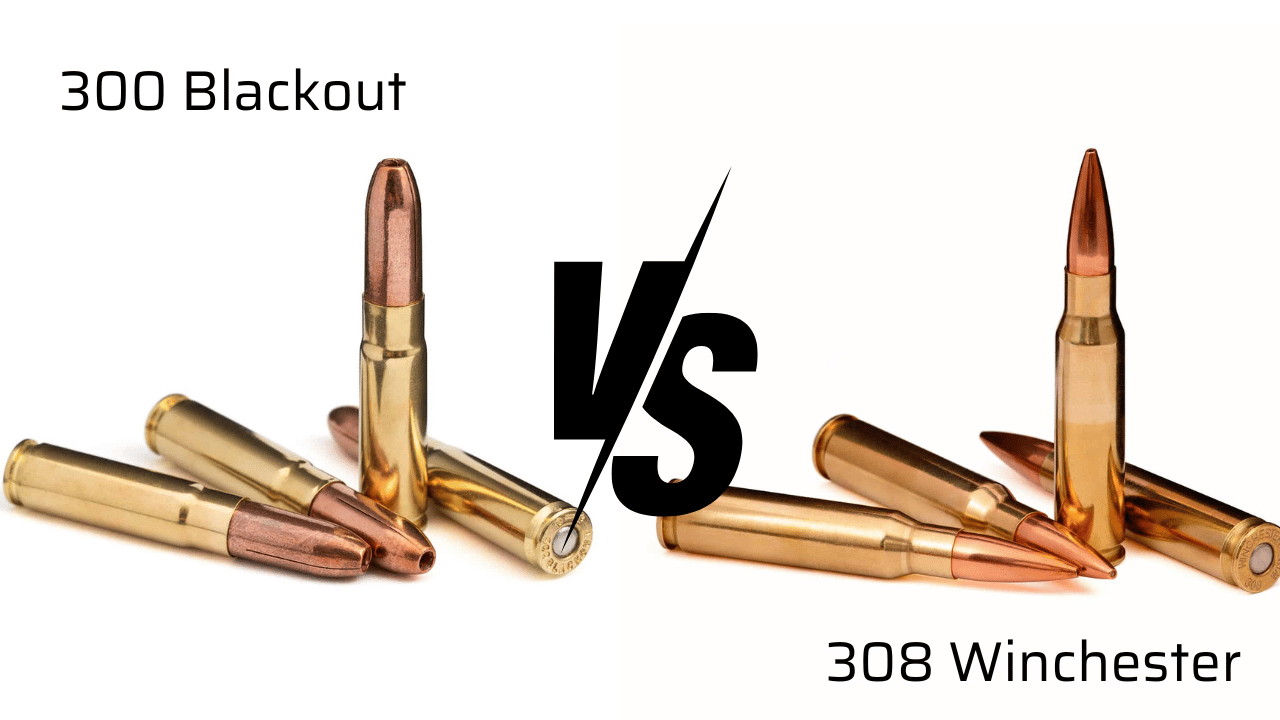You are thinking about getting into a .308-caliber rifle. Maybe your needs have evolved; you’ve moved and face a different set of threats. Maybe you’re thinking of getting into hunting or a new shooting sport. Or maybe you just have AR fatigue and want to change it up a bit. You’re thinking .300 Blackout vs .308; both fire a .30-caliber bullet, but which do you choose?
The .308 Winchester cartridge is a full-power, main battle rifle cartridge. Though a bit underpowered for the very largest game, it can anchor any game species in North America and has. The .300 Blackout is a different animal altogether. It is a purpose-built round meant to be hard-hitting at close range, suppress well, and perform from a shorter barrel. Of course, there is a lot more to it than that, so keep reading to find out which meets your specific needs!
Historical Development & Design Purpose
The .308 Winchester is positively venerable. Introduced in 1952, it is over 75 years old. Its parent case is the legendary .30-06, and it was developed for the U.S. Military. The intent was to utilize increases in powder technology to give a .30-06-like performance from a shorter package. The resulting cartridge, the .308 Winchester, was pretty much an instant success, and it is still widely used today.
The .308’s nearly identical military cousin, the 7.62×51 NATO cartridge, has served US soldiers, sailors, airmen, and Marines in every war since its adoption in 1957. From Vietnam to Iraq and Afghanistan, the 7.62×51 has been in the thick of it in battle rifles (M-14, FAL, G-3), sniper rifles (the Army’s M24 and the Marines’ M40 series), and medium machine guns (M60, M240, Mk48). Not only that, but the .308 remains the most popular short-action hunting cartridge in the world. Despite its age (and despite newer, sexier cartridges coming out seemingly every year), the .308 Winchester has a proven track record and is still extremely prolific.
.300 Blackout: Versatile and Suppressor-Friendly
The .300 AAC Blackout was also designed for the military, but much more recently. The standard military cartridge has, for many decades, been the 5.56 NATO cartridge. Some special operations types were looking for a larger caliber firing a heavier bullet for use in close-quarters battle (CQB). In 2009, the .300 Blackout was developed for the AR platform. Since it had the same overall length and the same case-head diameter as 5.56, it could be fired from the AR platform with nothing more than a barrel change. That, along with the ability to shoot both supersonic ammo and subsonic ammo (that suppresses extremely well, by the way), the .300 Blackout was off to a great start. It was almost immediately fielded in small numbers to top-tier special operators.
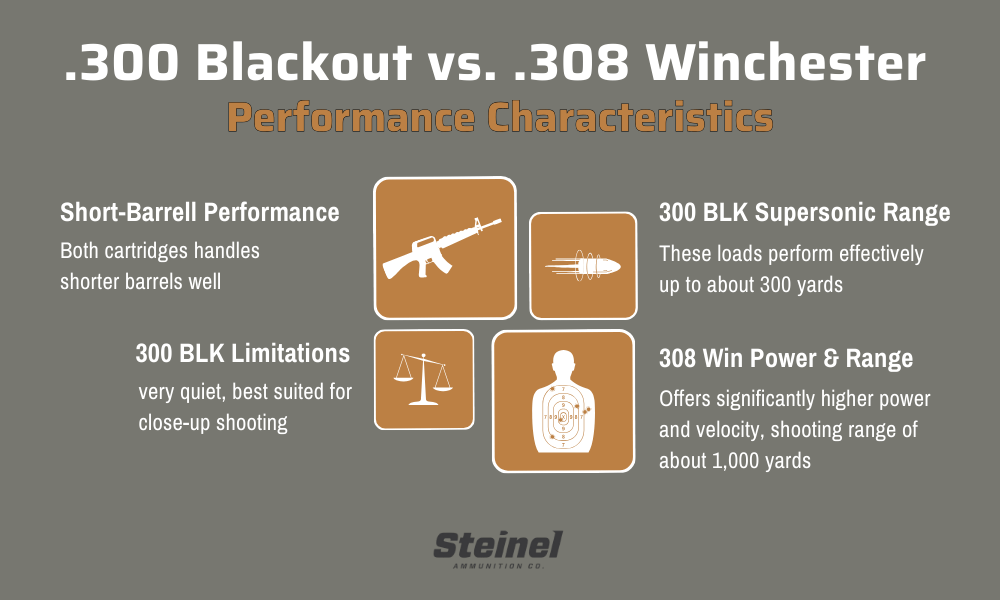
Performance Characteristics & Compatibility
The .300 Blackout conforms to AR-platform conventions in regards to case diameter, overall length, and operating pressure envelope, allowing it to function in AR-style semi-automatic rifles. Bullet weight is where the cartridge really differs from more conventional offerings, however. Users can choose from supersonic ammunition firing 90 to 150-grain bullets, or subsonic ammunition using 200 to 220-grain bullets.
.300 Blackout Performance
Both lose very little when fired from shorter barrels, being designed from the ground up to do so. From a 10.5-inch barrel, a 110-grain bullet will have a muzzle velocity of around 2,100 FPS, generating around 1,100 ft-lbs. of energy. Subsonic .300 BLK ammunition has the advantage of being extremely quiet, but only useful at extremely close ranges. A 220-grain slug from a 10.5-inch barrel leaves the muzzle right around 1,000 FPS and generates just under 500 ft-lbs. of muzzle energy. These low velocities lead to rapid bullet drop; the 220-grain subs drop two and a half feet at 100 yards. Supersonic loads can be stretched to about 300 yards, but don’t have much energy left to spare at long distances. Subsonic rounds are ideally suited for their original purpose: CQB distances of 50 yards and in.
.308 Winchester Performance
The .308 Winchester, on the other hand, literally sets the standard for AR-10-sized actions. While .300 BLK is an intermediate cartridge, .308 is a full-power rifle cartridge. Meant to be fired from a longer barrel, typical bullet weights for the .308 are 150 to 200 grains, and it boasts massively more muzzle velocity and energy. A 168-grain bullet, for instance, leaves the muzzle at 2,600 FPS with over 2,500 ft-lbs. of energy. That is two and a half times the energy from .300 BLK’s supersonic loads and about five times the energy of a subsonic round. This velocity and energy give the .308 tremendous effective range: snipers use this cartridge out to 1,000 yards.
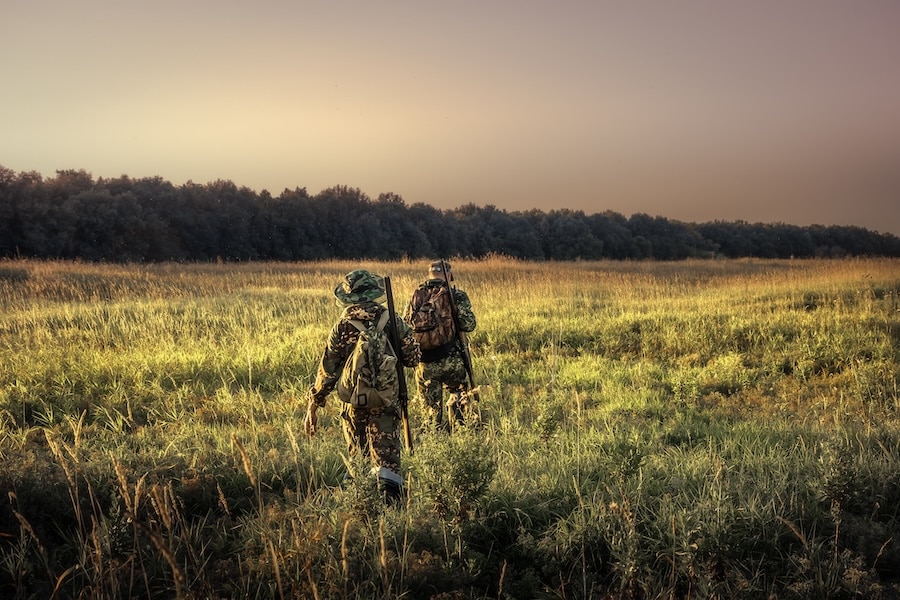
Platform Compatibility
On paper, the .308 makes the .300 Black look kind of puny. But there is much more to the story than just numbers. Another major consideration is compatible platforms for both options. The .300 BLK will fit in a standard AR-15 with nothing more than a barrel change and can utilize standard AR mags, standard AR bolt, etc. The .308 has to go in a much larger AR-10 platform, an M-14 style semi-automatic rifle, or a bolt rifle. Guns for the .300 are smaller, lighter, and quieter, while guns for .308 are bigger, heavier, louder, and produce more recoil.
Use Case Considerations
Use case is another crucial consideration for making an informed decision. These cartridges are radically different. With its greater muzzle energy, the .308 is the obvious choice for hunting anything larger than whitetail deer. With a longer barrel, it is also a better choice for long-range shooting. The .300 BLK is still a viable option for many uses, however. It makes the AR platform more versatile, allowing you a bit more power on medium game, like feral hogs at close range. If you were choosing a cartridge for home defense, subsonic .300 BLK ammo is formidable at close range, and very easy on the shooter.
Barrel Considerations
The .300 really shines from a shorter barrel. Unlike many rifle cartridges, it doesn’t lose a huge percentage of its speed and power when using a shorter barrel length, even down to 9 or 10 inches. The .308 (or 5.56 for that matter) would lose a great deal of its power, and produce a lot of flash and muzzle blast. If you’re looking for a close-range, fast-handling, short-barreled rifle, the .300 BLK is an excellent option.
Suppressor Performance
Finally, we get into suppressor performance: the .308 can be suppressed, but the .300 Blackout was literally designed for it. With subsonic loads with heavier bullets that don’t break the sound barrier, the .300 is one of the quietest firearms out there; you will literally hear the action working. Both of these cartridges can work with many 30-caliber suppressors, but the .308 will always be much louder than the .300, and the .308 will always produce a loud, supersonic “crack” as the bullet breaks the sound barrier.
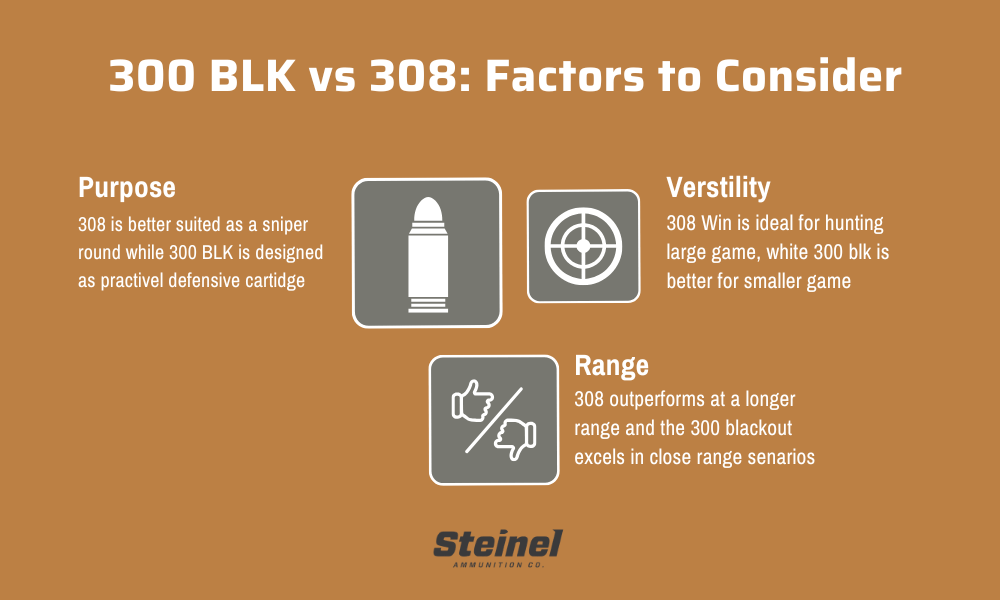
Making the Right Choice
Choosing between these cartridges means understanding what you want to do with the round. If you’re just looking to add a new gun to the safe, either will do. If you’re doing anything more serious, some consideration is necessary.
Sniper Precision vs CQB Punch
The .308 Winchester is going to be a much more versatile hunter. Deer, black bears, and even elk can be taken cleanly with .308, and all have been, regularly, for decades. The .300 AAC Blackout will put down whitetail and feral hogs, but that’s about the limit of its hunting effectiveness. Both are fun for recreational shooting, but again, the high-velocity .308 is the clear winner for longer-range shooting. The .300 is probably the more practical defensive round, and thrives with a short barrel, while the 308 definitely prefers longer barrels. Perhaps to put it more succinctly, one is a sniper rifle and the other is an assaulter’s CQB gun.
Price Point
Unfortunately, cost is also a consideration. The .308 uses more brass, lead, and powder than .300 Blackout ammunition, making .300 more economical to shoot. The guns might also be less expensive (all other things being equal) because they require a smaller action. For a little occasional, casual plinking, this might not matter, but if you plan to train hard or shoot competitively, ammo cost begins to mean much more than the upfront cost of the gun.
Steinel Ammunition Solutions
Regardless of which of these superb rifle cartridges you choose, Steinel Ammunition has ammo for your rifle. We currently offer three loadings in .308 Winchester, including a 168-grain ballistic tip, a 165-grain jacketed soft point, and a 168-grain boattail match round. For the .300 Blackout, we currently offer two subsonic loads: a 200-grain solid copper hollow point and a 220-grain total metal jacket.
While many ammunition manufacturers have a premium line, premium ammunition is all we do; we are truly Dedicated to Every Round™. Steinel Ammunition has a premium manufacturing process that carefully measures each and every component and precisely assembles each and every cartridge, producing ammunition that you can rely on for your next hunt…or to save your life. We conduct extensive accuracy and reliability testing, as well as performance testing. We test defensive loads using the FBI standard density test medium. Each and every new cartridge introduced to our line is extensively tested, as well, and the end result is flawless performance and products.
